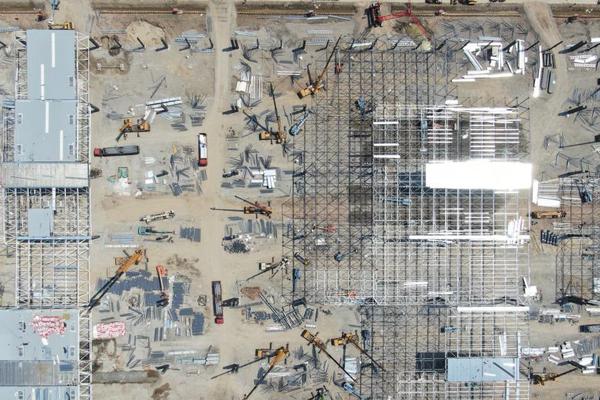AI can now forecasts nuclear fusion reactor instabilities in real time
By subscribing,巴西pg游戏排名榜 you agree to our Terms of Use and Policies You may unsubscribe at any time. Inside the tokamak, a doughnut-shaped enclosure engineered to house the magic of nuclear fusion, hydrogen atoms collide with monumental force, making a super hot and swirling plasma that’s even hotter than the sun. Nuclear fusion has the potential to be a sustainable source of energy as it uses isotopes of hydrogen, which are abundant and can be extracted from water and other sources. Scientists recently have discovered an artificial intelligence-led solution to forecast a potential plasma instability known as tearing mode instabilities. These are caused by the interaction of current and pressure gradients in the plasma, leading to magnetic islands that disrupt confinement. While nuclear fusion shows great promise, significant technical and engineering challenges remain to be overcome before fusion power can be realized on a commercial scale. One of the challenges being that the plasma inside a fusion reactor can lose stability. Plasma instability can lead to disruptions, which are sudden and large-scale events that can cause the loss of confinement and termination of the fusion process. “Tearing mode instabilities are one of the major causes of plasma disruption, and they will become even more prominent as we try to run fusion reactions at the high powers required to produce enough energy,” said Jaemin Seo, first author of the study. “They are an important challenge for us to solve.” At the DIII-D National Fusion Facility in San Diego, scientists showed that their AI model, trained using old data, could predict tearing mode instabilities up to 300 milliseconds beforehand. That’s 30 percent of a second, just how long a person’s takes to read another person’s expression. But that’s plenty for the AI to adjust how the reactor operates. Their experimental study has the potential to help prevent damage to the magnetic field lines in the plasma, which could stop the reaction. “Previous studies have generally focused on either suppressing or mitigating the effects of these tearing instabilities after they occur in the plasma,” added Seo. “But our approach allows us to predict and avoid those instabilities before they ever appear.” But creating an AI tool turned out to be as difficult as teaching someone to fly a plane. Using past data from the DIII-D tokamak, they constructed a deep neural network to predict future instabilities and trained a reinforcement learning algorithm to control the plasma. Through simulated experiments, the AI learned optimal strategies for maintaining high power while avoiding instabilities. Once refined, the AI controller successfully prevented instabilities during a real fusion experiment by adjusting tokamak parameters in real time. This proactive approach contrasts with current methods, which react to instabilities as they occur. “Being able to predict instabilities ahead of time can make it easier to run these reactions than current approaches, which are more passive,” said SangKyeun Kim, co-author of the study. “We no longer have to wait for the instabilities to occur and then take quick corrective action before the plasma becomes disrupted.” “We have strong evidence that the controller works quite well at DIII-D, but we need more data to show that it can work in a number of different situations,” said first author Seo. “We want to work toward something more universal.” The study was published in Nature. 


A fusion of AI and plasma physics
- 最近发表
-
- Cabbage Shortage Threatens South Korea’s Kimchi
- EU researchers power nanosatellites with high
- U.S. Military Starts Buying Japanese Seafood Amid China Ban
- The Despotism of Isaias Afewerki
- Rising sea temperatures will hit fisheries and communities in poor countries the hardest
- Leaked Docs Show China Censoring Media After Li Keqiang's Death
- I Got Hurt Feelings
- Rattling the Cage
- Why Biden’s Infrastructure Plan Could Be a ‘Big F**king Deal’ for American Farmers
- Seeking to quell civil unrest, Paraguay’s president says he will not seek reelection
- 随机阅读
-
- Singapore to have world's largest ocean
- Will Turkey’s referendum mark the end of democracy and the birth of ‘Erdoğanistan’?
- Japanese startup plans to vaporize space junk using ground lasers
- Do Farmers Know What Pesticides Are Coating Their Seeds?
- Is China the potential driver of a new wave of globalisation?
- South Korea to tackle CO2 & saltwater with clever tech
- Trump Administration Takes Steps to Get Farmworkers into the Country
- With crackdown on protests, Russia’s new friend Belarus tightens its grip on power
- A Ban on Mail Order Chicks?
- Seeking to quell civil unrest, Paraguay’s president says he will not seek reelection
- BMW and Figure to bring humanoid robots to car manufacturing
- Will Turkey’s referendum mark the end of democracy and the birth of ‘Erdoğanistan’?
- Alain Resnais, 1922
- Dairy Farmers Are Dumping Huge Amounts of Milk
- The second tallest building in US from AO Architecture
- Geologists Discover Lost Continent After Millions Of Years
- Alain Resnais, 1922
- Columbia To Cull Pablo Escobar’s 166 Hippos
- USDA Looks to Fill Labor Shortage With H
- This Ugly Fish Could Be The Future of Aquaculture
- 搜索
-
- 友情链接
-